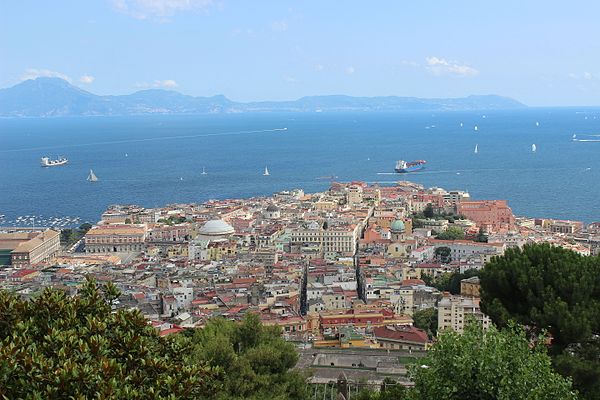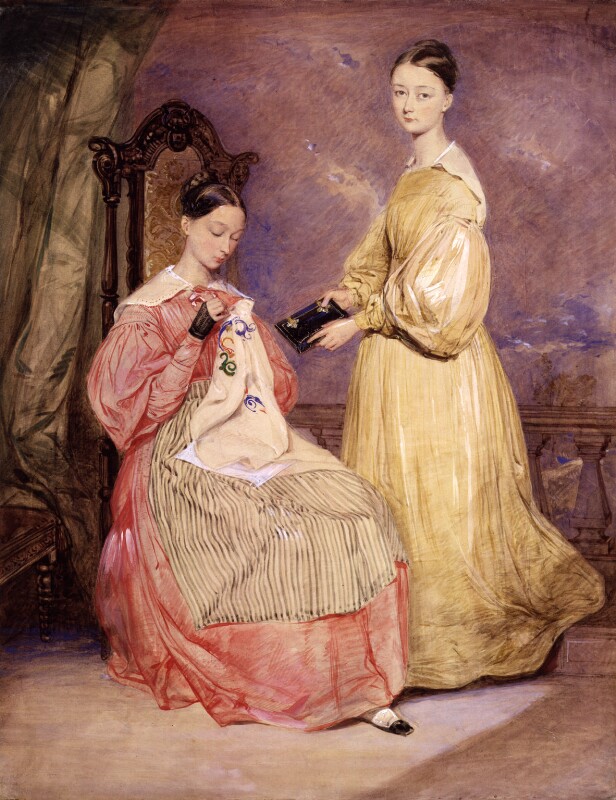FLORENCE NIGHTINGALE ( Florence, 1820 – London, 1910)
Florence Birth
She was born in the Grand Duchy of Tuscany on May 12, 1820. Her parents, William Edward Nightingale and Frances Nightingale, and her sister Parthenope, were temporarily residing in Florence, the city where Florence came into the world, in the bosom of an English family. wealthy and liberal. Her maternal grandfather, William Smith, was a dissident Christian parliamentarian, abolitionist from slavery, and sympathizer with the French revolution, and it is said that his granddaughter inherited his reformist spirit. Florence’s parents decided to call her by the name of the city where she was born.

Just a year earlier, they had done the same by choosing the name of their first daughter, born in Naples and whose name comes from the Greek, from the first foundation of the city of Naples in the time of Ancient Greece, 7th century B.C. Frances Parthenope Verney (1819 – 1890) was a renowned English writer and journalist. In 1858 she became the second wife of baronet Sir Harry Verney who was introduced to her by her sister. She was known as Frances Parthenope Nightingale, Lady Verney, Parthenope Nightingale, Parthe, “Pop”, Parthenope Verney and Lady Frances Verney.

Parthenope 
Naples
Back to England
Her family returned to England a year after her birth, settling in Derbyshire, in this city she spent her childhood and completed her studies, receiving a careful education in mathematics, history and languages. An important part of her education was received at home by her father, a Cambridge graduate, and she always excelled in Science and particularly in Mathematics. Florence manifested her love for her father in acts and letters; she was her best friend during her childhood, she had a very special affection and this lasted his whole life. Fanny, as her mother was familiarly called, never showed such great affection and Florence knew that her favorite was her sister Parthenope, but somehow, she understood her. Florence cared for her mother in her old age, blind and very ill until the day of her death, on February 2, 1880, at the age of 92.

Frances Parthenope Verney (standing) and Florence (sitting)
1836 by William White
Her Vocational Call
Florence had a religious vocation as intense as her passion for science which led her to feel that God had entrusted her with a mission. In her diary it reads:
“God has spoken to me and has called me to his service. What form this service should take is something that the Voice did not mention. ”
At the age of seventeen and after her mystical experience, her vocation to help those who suffered the most and the sick came to her, but her parents opposed it because they affirmed that women of their social class should not work. Florence was determined about what she wanted to dedicate her life . Despite coming from a rich family, she gave up her well-off life and guided by her religious convictions, she faced the prejudices of the time to achieve a degree that would allow her to fulfill her call, consecrating her life to the care of others.

(HENRY HERING/WIKIMEDIA COMMONS)
Her Training
Florence was educated more than many ladies of her time. Her desire was to study mathematics, which her parents resisted because she was a woman and in 1840, in the rigid Victorian society, the role of women in a wealthy British family was limited to her social life. Her determination paid off and she was a private disciple of James Joseph Sylvester, a noted founding mathematician of the American Journal of Mathematics and who is credited with mathematical concepts such as “graph,” “matrix,” and “discriminant.” When she was young, she worked as a tutor for children in mathematics, where her teaching method was based on analysis, questioning and drawing conclusions.
Her parents strongly opposed their daughter pursuing a profession for the poor and servants and fought with her for 10 years until they finally understood that marrying their daughter to a candidate according to her position would not be possible. Florence refused to marry and dedicate herself to the family. Even her sister Parthenope, when Florence had decided in 1844 to dedicate her life to nursing, strongly opposed such a decision, along with their mother. After facing her entire family, the canons of the time and all the social conventions imposed on young girls from wealthy families, she achieved her purpose and was finally allowed to study science and mathematics, receiving the training she wanted to acquire for her vocation.

A chance would allow her to fulfill her dream, the opportunity was provided by a cultural trip to Egypt and Greece. On her return, Florence stopped at a hospital in Germany (according to some sources, fell ill and was treated there) at the Kaiserswerth Lutheran Hospital and there she learned about the work of her deaconesses. She decided to return there to learn and some time later the young woman returned to Germany to train there as a nurse, a decision that would change her life. Nightingale began studying nursing from 1844, the year in that her father relented and decided to pay for the best education for her daughter. She went to Salisbury to train as a nurse. In 1850 she entered the Saint Vincent de Paul Institute in Alexandria (Egypt) and later attended the Institute for Protestant Deaconesses in Kaiserswerth (Germany). Florence ended up being the first “Professional Nurse”, after improving the care of the wounded in the Crimea and popularizing the training of women in this profession. She became a national heroine in Victorian England.
Her pet “Athenea”, an owl
In the Partenon of Athens, Greece 1850, a little owl fell into the hands of evil children. The little owl was seen by a young woman who, certain that she was about to be tortured, saved the little bird who was lucky that the young woman was Florence Nightingale, the British nurse whose name is now synonymous with the word “mercy”. Nightingale rescued the poor little owl, whom he called Athena for the Greek goddess of war and wisdom. True to her nature, the nurse lovingly cared for Athena, fed her by hand, trained her to curtsy, and put her safely in her apron pocket. From 5 years of company, the war broke out in Crimea and Florence was called to bring her nursing skills to the field. A war zone is no place for a pet, so Florence arranged for her friend to reside in her attic during her absence. Unfortunately, after parting with her caretaker she soon died and Forence who had been busy preparing to leave but had not yet left, was so heartbroken that she was willing not to part with her dear friend so quickly, she delayed her journey and found a taxidermist to preserve Athena forever. The Florence Nightingale Museum in London is now the permanent home for Athena.

